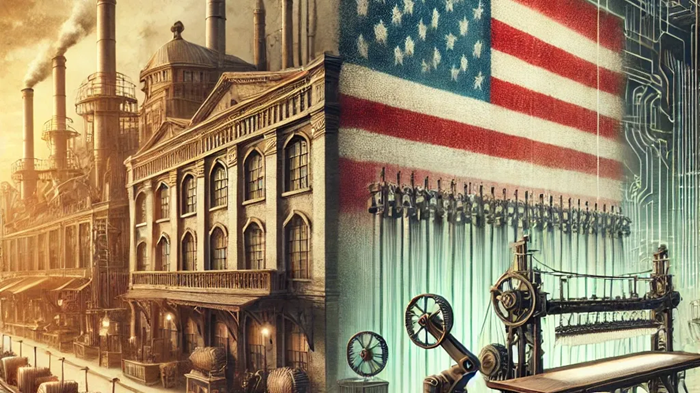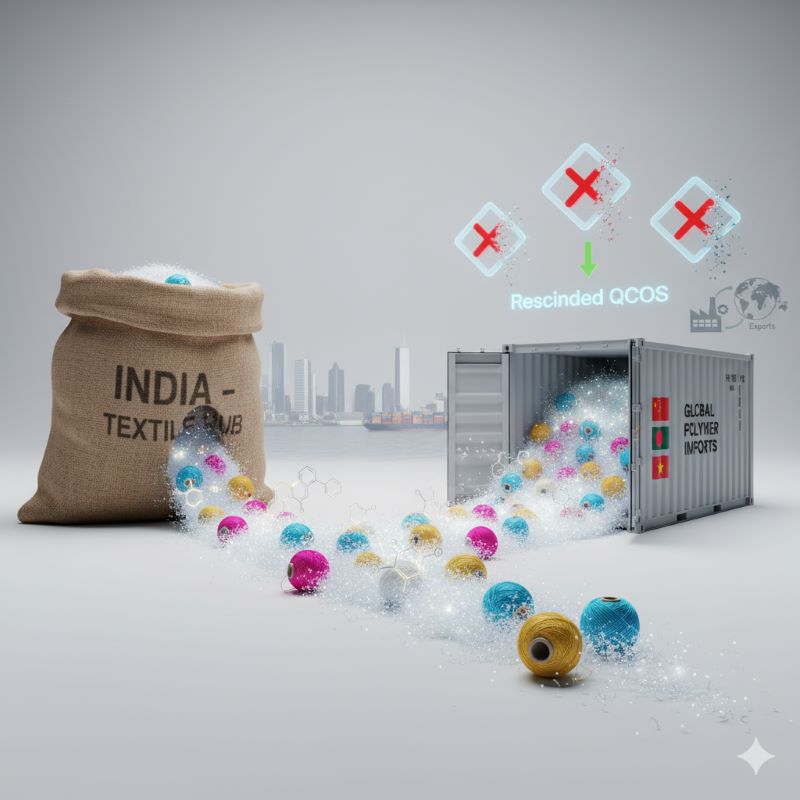
When the US announced a sweeping 50 per cent tariff on Indian textile and apparel imports, the shockwaves reverberated across India’s factory floors and policy circles alike. The move, ostensibly aimed at protecting American manufacturing threatened to upend a sector that employs over 45 million people and contributes nearly 10 per cent of India’s total exports.
In Tiruppur, the heart of India’s knitwear export hub where a third of shipments go to the US, panic spread swiftly. Containers sat idle at ports. Buyers renegotiated contracts or withdrew altogether. Within a fortnight, yarn orders plunged 30 per cent, and many exporters supplying brands like Gap, Tommy Hilfiger, and Ralph Lauren were asked to absorb a quarter of the tariff burden an impossible demand in an industry where margins rarely exceed 7-8 per cent.
“This isn’t just a slowdown, it’s a tectonic shift,” said Raja Shanmugam, former president of the Tiruppur Exporters’ Association. “We’ve faced currency volatility, inflation, and global recessions before. But a 50 per cent tariff changes the fundamental equation.”
The immediate fallout an existential threat
Exports to the US, valued at around $10.7 billion annually, are now expected to fall by up to 40 per cent, according to preliminary industry estimates. The Global Trade and Research Initiative (GTRI) reported that between May and August 2025, India’s overall exports to the US had already declined 22.2 per cent, even before the tariff took full effect.
In the apparel sector, some exporters reported losing 80 per cent of US business. Embroidery and finishing units, heavily dependent on export-linked orders, laid off as much as 40 per cent of their workforce. “We’re seeing daily wage workers returning to their villages,” said an exporter from Karur. “The US market is gone for now. We need new doors to open.”
India suddenly found itself at a severe disadvantage. Competing exporters Bangladesh, Vietnam, and China continued to enjoy lower tariff rates, making Indian goods twice to thrice as expensive.
The Reboot: Building a post-US strategy
Rather than waiting for Washington to reconsider, New Delhi and the industry charted an ambitious recovery plan one rooted in diversification, innovation, and structural reform. The Ministry of Textiles set a long-term goal: triple India’s textile exports to Rs 9 lakh crore by 2030. To get there, the roadmap rests on three strategic pillars:
1. Market diversification beyond the US
Europe and the UK: Negotiations for the India-UK Comprehensive Economic and Trade Agreement (CETA) are entering their final phase. Once ratified, it is expected to eliminate tariffs on nearly all textile categories, giving Indian exporters an edge. Analysts project a 30-40 per cent jump in textile exports to the UK post-agreement.
Meanwhile, the European Union, which accounts for 27 per cent of India’s textile exports, remains a key target. Exports to Germany, the EU’s largest economy, have already grown 11.73 per cent year-on-year during April-August 2025.
Russia: India is actively courting the Russian market, which imports $12 billion in textiles annually. Recent trade missions and exhibitions in Moscow are part of a broader diplomatic effort to expand India’s footprint in Eurasia.
China & Hong Kong: Despite being competitors, China and Hong Kong have emerged as surprising growth markets. Exports to China rose 19.65 per cent, while to Hong Kong increased 26.19 per cent between April and August 2025, proof that supply chain realignments are opening new corridors for Indian products.
Australia & South Africa: Exporters are also exploring these emerging markets, though industry leaders caution that meaningful trade relationships will take 2-3 years to mature. “The world is realigning its sourcing base. India must become the supplier of choice not just for one market, but for many,” says Ajay Sahai, Director General, FIEO.
2. Strengthening domestic manufacturing
Production-Linked Incentive (PLI) Scheme: The PLI for textiles, focused on man-made fibers (MMF) and technical textiles, offers financial incentives for scale and innovation. The government recently extended the deadline for applications, showing a renewed commitment to help exporters upgrade technology and reduce costs.
PM MITRA parks: The Rs 4,445 crore, Mega Integrated Textile Region and Apparel (PM MITRA) scheme aims to create seven world-class textile hubs integrating the entire value chain from fiber to finished garment under one ecosystem. Tamil Nadu, Gujarat, and Maharashtra have already begun implementation.
Fixing the inverted duty structure: One of the sector’s long-standing bottlenecks the inverted duty structure, is under review. Currently, some raw materials attract higher import duties than finished products a distortion that undermines competitiveness. Addressing this anomaly, particularly in the MMF and viscose segments, could unlock significant cost savings.
3. Leveraging India’s strengths
Kasturi Cotton initiative: India’s new ‘Kasturi Cotton’ brand, supported by traceability and quality certification, aims to position Indian cotton alongside the world’s best. With sustainability increasingly influencing buyer decisions, this initiative could open high-value global segments.
Workforce and skill development: Schemes like Samarth continue to upskill textile workers, ensuring a steady pipeline of trained manpower. Interestingly, Russian and African textile enterprises have expressed interest in hiring Indian technicians, underscoring India’s reputation for skill excellence.
Moving up the value chain: A shift toward high-value and sustainable products organic cotton, recycled fibers, and ethical sourcing is already visible. India’s share in the premium and luxury apparel export category is growing, as global brands seek alternative suppliers to China amid geopolitical tensions.
Table: Export values for textile and apparel commodities April to August 2025
|
Commodity |
Export value (Apr–Aug 2025) |
% change (Y-o-Y) |
|
Readymade Garments |
$6.765 billion |
+5.78% |
|
Cotton Textiles |
$4.865 billion |
-0.62% |
|
Man-made Textiles |
$1.995 billion |
+0.24% |
|
Total Textile & Apparel |
$15.113 billion |
+2.52% |
Source: DGCIS, Ministry of Textiles
Despite the headwinds, India’s overall textile exports grew 2.52 per cent in early FY26 thanks to diversification gains in non-US markets. “This crisis has been brutal, but it’s forcing us to innovate faster than ever,” explains Sanjay Jain, MD of TT Ltd. “We’re digitizing our supply chains, embracing sustainability, and targeting niche markets like athleisure and performance wear.”
Rewriting the global playbook
India’s textile story has always been one of resilience from surviving the quota regime to weathering COVID-19 disruptions. The current tariff shock, while severe, is proving to be a catalyst for long-overdue transformation. Analysts note that if the current reforms and diversification strategies succeed, India could emerge as the world’s second-largest textile exporter by 2030, behind only China. The US tariffs, once seen as a crippling blow, may ultimately redefine India’s global standing not as a cost-based supplier, but as a design-driven, innovation-led textile powerhouse. As one industry veteran put it: “They wanted to hurt us. Instead, they woke us up.”











